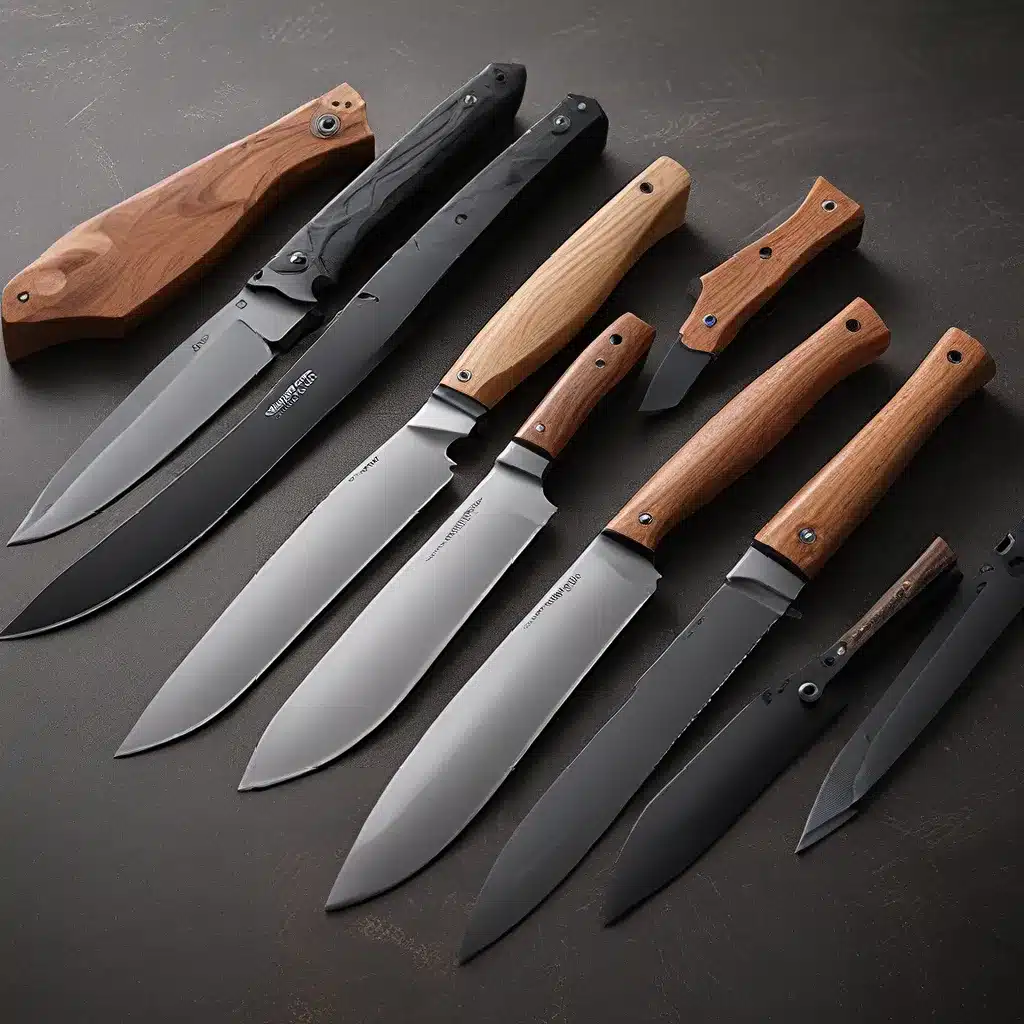
As a lifelong knife enthusiast, I can tell you that the world of knife design is constantly evolving, and the future holds some truly exciting possibilities. From the sleek and modern Damascus steel blades to the rugged and practical survival knives, the knife industry is always pushing the boundaries of what’s possible.
The Cutting Edge of Blade Technology
One of the most fascinating aspects of knife design is the rapid advancements in blade materials. Gone are the days of simple carbon steel blades – today, we have access to all sorts of exotic and high-performance alloys. Titanium, s30v steel, and even ceramic have all made their way into the hands of discerning knife enthusiasts.
But it’s not just the materials that are changing – the manufacturing processes are also evolving at a breakneck pace. 3D printing is starting to make its mark on the knife world, allowing for the creation of truly custom and one-of-a-kind blades. And who knows what the future holds? Maybe we’ll see knives with self-sharpening edges or built-in sensors to alert us when it’s time for a tune-up.
The Ergonomics Revolution
Of course, a sharp and durable blade is only half the battle. The ergonomics of a knife are just as important, if not more so. Knife designers are constantly experimenting with new handle shapes, grip textures, and balance points to create the ultimate in comfort and control.
I recently had the chance to try out a knife with a fully customizable handle, where I could adjust the size, shape, and even the material to fit my hand perfectly. It was a revelation – suddenly, a tool that I had used countless times before felt like it was an extension of my own hand. And I can only imagine what the future holds, with advancements in 3D-printed and programmable handles.
The Intersection of Tradition and Innovation
But as exciting as these technological advancements are, I don’t want to forget the importance of tradition in the world of knife design. After all, many of the most iconic and beloved knife designs have their roots in centuries-old craftsmanship.
Take the classic Bowie knife, for example. Its distinctive drop-point blade and sturdy construction have made it a staple of American frontier history. And yet, modern knife makers are finding ways to put a new spin on this timeless design, incorporating modern materials and ergonomic enhancements to create something that’s both familiar and cutting-edge.
It’s this delicate balance between tradition and innovation that makes the knife industry so fascinating to me. We’re constantly looking to the past for inspiration, while also pushing the boundaries of what’s possible. And I can’t wait to see what the future holds.
Knives as Tools, Knives as Art
Of course, the world of knife design isn’t just about utility and function – it’s also about aesthetics and craftsmanship. Some of the most stunning knives I’ve ever seen are more akin to works of art than practical tools.
Take the Damascus steel blades, for example. The intricate patterns and swirling designs are the result of a painstaking forging process that can take days or even weeks to perfect. And when you hold one of these blades in your hand, you can feel the history and artistry imbued in every curve and edge.
But it’s not just the blades that are becoming works of art – the handles and sheaths are also getting the high-end treatment. I’ve seen knives with hand-carved handles made from exotic woods, inlaid with precious metals, and even adorned with precious gemstones. These are the kinds of knives that you’d be more likely to find in a museum than on a workbench.
The Future is Sharp
As I look to the future of knife design, I can’t help but feel a sense of excitement and anticipation. The possibilities are endless, and I can’t wait to see what the next generation of knife makers and designers will come up with.
Maybe we’ll see self-cleaning blades that never need sharpening. Or perhaps intelligent knives with built-in sensors that can detect the perfect slicing angle for any task. And who knows, maybe we’ll even see 3D-printed knives that can be customized down to the millimeter.
One thing is for sure – the future of knives is bright, sharp, and full of possibility. And I, for one, can’t wait to see what the future holds. After all, as the saying goes, “the pen is mightier than the sword, but the knife is mightier than them both.”
So if you’re a fellow knife enthusiast, keep your eyes peeled and your senses sharp. Because the next great innovation in knife design could be just around the corner. And who knows, maybe it’ll be found right here at Herman Knives.


